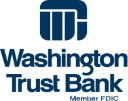Economic Impact
Bloomsday's impact on the Spokane region is not limited to improved cardiovascular fitness. The event results in a significant economic impact as well. In 2004, a study prepared for the Lilac Bloomsday Association by Gonzaga University students Dan Futrell and Luke Hallstone, with oversight by Professor Scott Bozman, showed a direct economic impact of $9,576,959.64. In 2017 dollars and with 38,748 finishers, this would equal $12,130,448.88, according to the US Bureau of Labor Statistics website. So in 2017, the equivalent economic impact would be approximately $12,130,448.88.
The Bloomsday Economic Impact Study was an assignment for a Research Methods class at Gonzaga. The survey was conducted by 60 marketing students from Gonzaga's Jepson School of Business. 568 Bloomsday finishers and 202 spectators were interviewed near the runner statues in Riverfront Park immediately following the run. Study results were as follows:
Direct Economic Impact (includes participants and spectators): $9,576,959.64 (2017 equivalent is approximately $12,130,448.88)
Expense Breakdown:
| Travel |
$2,882,512.21 |
| Lodging |
$1,876,735.71 |
| Food |
$2,136,739.68 |
| Entertainment |
$605,255.53 |
| Services & Products |
$2,075,716.51 |
| TOTAL |
$9,576,959.64 |
The average runner brought in $241.42 (including spectator expenditures). In 2017 dollars, this would be $313.06.
A full copy of the study is available on request.
Previous Bloomsday economic impact study results:
1985: $1,222,991.00
1996: $8,075,662.00



















